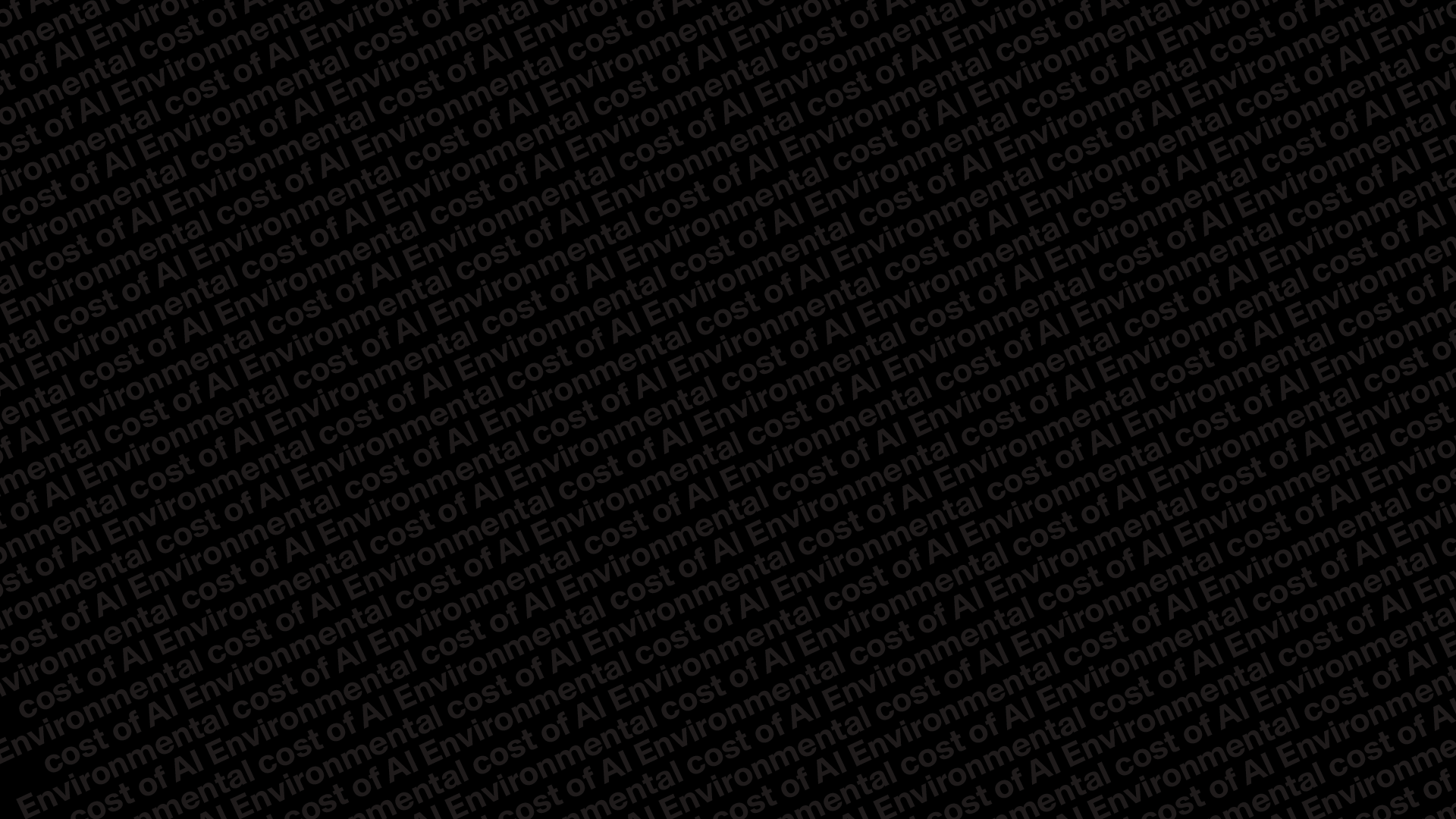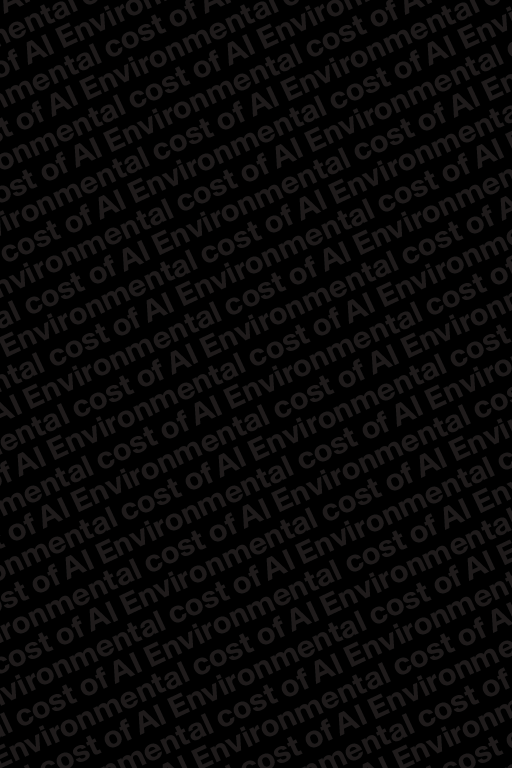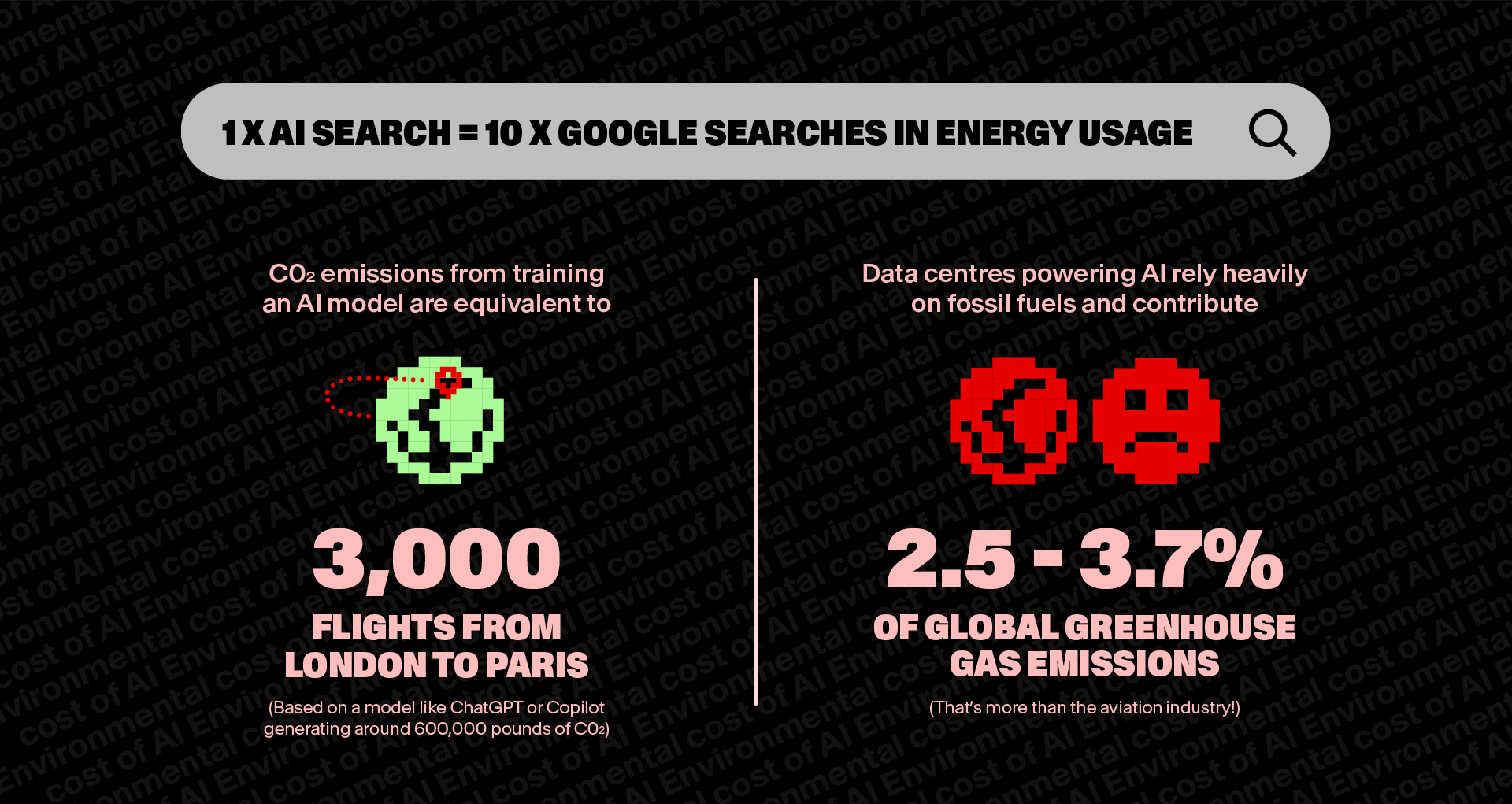

Quick guide to sustainable AI
The Environmental Cost of AI
Artificial Intelligence (AI) is revolutionising the creative industry. From crafting stunning imagery to optimising marketing campaigns, AI is doing it all.
However, complex technologies like AI require a huge amount of computer power, which comes at a huge environmental cost.

On the bright side, AI can also help us save energy – for example, by optimising the time it takes to render complex animations. AI-powered design can generate beautiful visuals from text prompts, streamlining the creative process and opening up a world of new possibilities. AI can even make our campaigns super personalised and efficient by identifying patterns and segmenting audiences based on demographics, interests, and behaviours.
The benefits of AI are undeniable, but we can’t ignore its environmental impact. As an agency, we need to use AI in a way that balances innovation with environmental responsibility.
Here are a few ways we can make a start.
DO
Keep AI chats concise
Be mindful of how long you’re chatting with those AI bots. Keep it short and sweet.
Have a clear brief
Think about what assets you need before you dive in. Do you really need 3 key visuals? Make a plan, write a prompt, create only what you need.
Refine prompts
Spend quality time on your prompts. Write them like you’re briefing a photographer. Go big on details: think mood, lighting, composition, effects.
Switch off AI when idle
Close your AI tool when you’re not using it to save energy. You turn your lights off when you leave a room, right? Of course you do.
Acknowledge that even AI has limitations
Use AI to assess content and provide feedback. But remember that humans produced the data AI is trained on, some of which could be inaccurate, biased, or harmful.
DON’T
Engage in lengthy AI conversations
Like about what to have for tea. Chatbots have better things to do, and so do you.
Over-generate
Generate a million variations of the same image of a cat wearing sunglasses. You’re wasting everyone’s precious time and energy.
Rely on the scattergun
Trial-and-error is a long, energy-guzzling path to getting the image you want. Better prompts = better outputs first time.
Keep AI tabs open
Most AI tools have features that run continuously in the background. Shut them down – AI needs a nap too.
Treat AI feedback as gospel
Use it to inspire, not dictate, your creative decisions. It’s just one data point. Combine it with your judgement and feedback from human colleagues.
Using AI is just like briefing any other person. The same principles apply: the better the brief, the better the output – and you’ll be minimising your AI carbon footprint in the process too.
If you have any questions or would like to know more, please get in touch with us at europe@havaslynx.com.